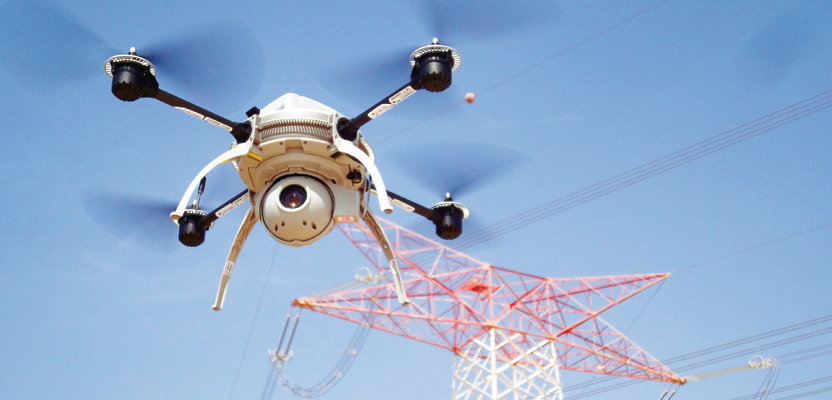The FAA’s streamlined Section 333 exemption and COA process is welcome, but there’s still a fly in the ointment.
While the ongoing FAA Section 333 exemption process is a big step in the right direction for UAS, all operators flying under these exemptions are constrained by the VLOS rule: all flights must be conducted within visual line of sight. This restriction affects large-scale integration of UAS into NAS for several significant markets.
Unmanned and Unlimited reached out to John Palatiello, representing MAPPS on the FAA Aviation Rulemaking Committee working group that is developing the next set of rules for beyond visual sight (BVLOS).
U & U: Can you provide us with an update on how this important effort is progressing?
John Palatiello: The Aviation Rulemaking Committee (ARC) BVLOS working group has been focused on establishing baseline information for its input to the FAA. For example, each member was asked to provide three- to five-year anticipated requirements for BVLOS UAS operations.
On behalf of MAPPS, I indicated that we look forward to a VLOS and BVLOS regulatory environment that will enable UAS to support key industries such as transportation, oil and gas, mining, power transmission, and agriculture. These industries often have specific infrastructure in defined geographies that require more support than what can be efficiently and safely provided by manned aviation. We believe this additional support will enhance public health, welfare, and safety while enabling advanced technologies to improve performance and potentially reduce costs.
This support can be safely provided sooner through administrative/procedural processes before fully capable sense-and-avoid capabilities that are certified and standardized are achieved. The same is true for communications systems. Both of these technologies are feasible. However, both are also quite expensive and therefore not seen as practical in the short term for the very small systems.
As an association of firms that currently operate manned aircraft for geospatial data acquisition and are entering the UAS arena, we are keenly interested in the safety of both manned and unmanned aircraft.
U & U: In what instances does the VLOS constraint become problematic?
JP: VLOS becomes an issue, not solely due to the distance of the UAS from the operator, but where terrain is also a factor. For example, when conducting a survey of an open pit mine, the operator loses VLOS when the UAS flies down into the pit. The operator regains contact when the UAS emerges. Actually, the UAS is technically at a negative Above Ground Level (-AGL) elevation.
The second and bigger issue is quarries and stockpiles. This occurs when the UAS cannot be seen for some periods of time due to a stockpile blocking the line of sight.
U & U: What technologies are being discussed to facilitate BVLOS flight operations?
JP: It is suggested that an “autonomous agent” system be incorporated into the flight management firmware. When activated, the UAS uploads (via cellular technology) its flight plan and tail number to a central database. It also downloads the flight plans of any other vehicle that will be in the vicinity of another. This central database could be run at a private firm and needs not be a government system. Such a system exists today for satellites and could be easily adopted for UAS.
Coupled with the above, the “national database” can also contain “no fly zones.” The firmware can have a complete list of permanent, published zones, but when activated, include all new, short-term, and temporary restricted areas. The firmware could be hard coded to prevent flight into these areas, regardless of the operator’s flight instructions, or some zones can be restricted only by altitude or time of day. In these cases, the flight plan may enable the aircraft to penetrate these areas only at those unrestricted altitudes or times, such as sports stadiums during an event.
UAS for aerial surveying and mapping will need to fly BVLOS for days on end. They will need to be able to refuel/recharge in unattended mode. Our pilots will need to be able to fly these “across Texas” from a base of operations office in Iowa, for example. We will need to fly across populated and unpopulated areas.
Until operational, affordable, sense-and-avoid technology is available, the aforementioned technology and process can be operational.
Many new technologies are being developed and tested, which should, over the next several years, prove to be capable of meeting the needs for safe BVLOS operations. These new technologies will need to have increasing levels of proficiency as the systems are flown at higher altitude and are flown in more complex airspaces.
The establishment of a graduated set of requirements for BVLOS technologies based on types of airspace, altitudes, proximity to people, etc. may be desirable. The easy approach would be to require all BVLOS operations to have the most sophisticated systems available. This would immediately create just two classes of UAS, the very small systems for VLOS operations and the large sophisticated systems for all BVLOS operations. However, the technology and applications will become much more sophisticated than that. A “one size fits all” approach is not recommended.
U & U: What else is MAPPS concerned about on the UAS legislative front?
JP: We’ve also focused on perceived barriers to conducting those operations. My input has been that MAPPS is concerned that technology development will outpace FAA rulemaking. While assuring the safety of the national airspace with the integration of commercial, operational UAS, such rules must be dynamic enough to respond to changing and improving technology.
Finally, we’ve discussed recommendations for the FAA to consider on how to remove those barriers. I pointed out that it is important that FAA accept—and educate Congress, state legislatures, other target audiences, and the general public about—the expectation of safety. Every day Americans accept a certain risk when they ride in an automobile or board a commercial airliner. While there are safety rules and systems in place, there are still accidents, failures, and injuries. The same must be recognized and accepted with UAS. Understanding how to minimize and manage these events will be necessary. Technology and regulations as above will help to greatly minimize and mitigate, but never completely eliminate such errors, failures, and irresponsible actions.
The focus of regulations should be on outcomes, not the means to outcomes. Technology and innovation will create the means to achieve desired FAA outcomes.


